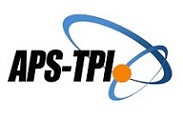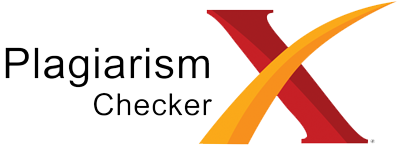Pengembangan Media Pembelajaran Literasi Dan Numerasi Berbasis Budaya Lokal Untuk Siswa SD Kelas Rendah
Abstract
Learning within the Merdeka Curriculum emphasizes the importance of literacy and numeracy. As a result of this focus, there is an increasing demand for instructional media that support literacy and numeracy. Therefore, this research aims to develop literacy and numeracy instructional media, particularly those rooted in local culture, for low-grade elementary school students. The development of media utilizes the 4D development model. The resulting products are assessed for their suitability by experts, including media and instructional design experts. Expert evaluations employ media and instructional design assessment questionnaires. Trial data are then analyzed descriptively. The development results indicate the creation of five literacy media and five numeracy media. Assessment of media quality by experts shows that the developed media falls into the category of excellent according to media and instructional design experts. Furthermore, the experts also affirm the suitability of the media for literacy and numeracy instruction. With the introduction of these new media, it is hoped that the need for instructional media can be effectively met.
Abstrak
Pembelajaran dalam Kurikulum Merdeka menekankan pentingnya literasi dan numerasi. Karena fokus pada aspek ini, permintaan akan media pembelajaran yang mendukung literasi dan numerasi semakin meningkat.. Untuk itu dalam penelitian ini dilakukan pengembangan media pembelajaran literasi dan numerasi khususnya media pembelajaran berbasis budaya lokal untuk siswa sekolah dasar kelas rendah. Pengembangan media menggunakan model pengembangan 4D. Produk hasil pengembangan diuji kelayakannya melalui ahli yang meliputi uji ahli media dan desain pembelajaran. Penilaian ahli menggunakan instrumen angket penilaian media dan desain pembelajaran. Data hasil ujicoba kemudian dianalisis secara deskriptif. Hasil pengembangan memperlihatkan telah dihasilkan lima media literasi dan lima media numerasi. Hasil penilaian hali kualitas media menunjukkan bahwa media yang dikembangkan menurut ahli media dan desain pembelajaran ada pada kategori sangat baik. Selain itu, ahli juga menyatakan media layak untuk digunakan untuk pembelajaran aspek literasi dan numerasi. Dengan adanya media baru ini, harapannya kebutuhan akan media dalam pembelajaran dapat terpenuhi secara efektif
Keywords
Full Text:
PDFReferences
Ainley, M., & Ainley, J. (2011). Student engagement with science in early adolescence: The contribution of enjoyment to students' continuing interest in learning about science. Contemporary Educational Psychology, 36(1), 4-12.
Atmojo, S.E., Lukitoaji, B.D., & Noormiyanto, F. (2021). Thematic learning based on local culture in implementing national character values in inclusive referral elementary school. Jurnal Kependidikan. 7 (4). 845-856. https://doi.org/10.33394/jk.v7i4.4256
Bunga, K. W., Laksana, D. N. L., & Kaka, P. W. (2022). Analisis kebutuhan sumber belajar berbasis budaya lokal bagi guru sekolah dasar. Jurnal Pendidikan Dasar Flobamorata, 3(1), 248-255. https://doi.org/10.51494/jpdf.v3i1.660
Charlina, C., Septyanti, E., Mustika, T.P., & Rahmi, A. (2022). Electronic module as learning needs to write exposition texts for junior high school students. Journal of Education and Learning (EduLearn), 16(2), 219-225. https://doi.org/10.11591/edulearn.v16i2.20402
Clark, R. C., & Mayer, R. E. (2016). E-learning and the science of instruction: Proven guidelines for consumers and designers of multimedia learning. John Wiley & Sons.
DeCoito, I., & Richardson, T. (2016). Using Technology to Enhance Science Literacy, Mathematics Literacy, or Technology Literacy: Focusing on Integrated STEM Concepts in a Digital Game. In M. J. Urban & D. A. Falvo (Eds.), Improving K-12 STEM Education Outcomes through Technological Integration (pp. 1–22). IGI Global. https://doi.org/https://doi.org/10.4018/978-1-4666-9616-7.ch001
Dhiku, D. D., Laksana, D. N. L., & Wau, M. P. (2023). Studi kelayakan konten dan desain : Bahan ajar multilingual berbasis konten dan konteks budaya lokal etnis ngada untuk siswa SD. Jurnal Pendidikan Dasar Flobamorata, 4(1), 368-375. https://doi.org/10.51494/jpdf.v4i1.813
Ennis, R. H. (2011). The nature of critical thinking: An outline of critical thinking dispositions and abilities. Inquiry: Critical Thinking Across the Disciplines, 26 (1), 4-18. https://doi.org/10.5840/inquiryctnews20112613
Facione, P. A. (2015). Critical thinking: What it is and why it counts. Insight Assessment.
Frank, G.Y., Quanjiang, G., Michael, L., Chun, L., & Chuang, W. (2021). Developing literacy or focusing on interaction: New Zealand students’ strategic efforts related to Chinese language learning during study abroad in China. System, 98. 102462. https://doi.org/10.1016/j.system.2021.102462
Gardner, H. (2006). Multiple intelligences: New horizons. Basic Books.
Gay, G. (2018). Culturally responsive teaching: Theory, research, and practice. Teachers College Press.
Hasibuan, A.M., Saragih, S., & Amry, Z. (2019). Development of learning materials based on realistic mathematics education to improve problem solving ability and student learning independence. International Electronic Journal of Mathematics Education. 14 (1). 243-252. https://doi.org/10.29333/iejme/4000
Kustini, S., Herlinawati, & Indrasary, Y. (2020). Penggunaan teknologi dalam pembelajaran bahasa inggris untuk meningkatkan keterampilan multiliterasi. Intekna, 20(2), 85–94.
Laksana, D. N. L., Lawe, Y. U., Ngura, E. T., Kata, F., & Mugi, E. (2023). Analisis kebutuhan bahan ajar untuk pembelajaran baca tulis kelas rendah berbasis bahasa ibu dengan muatan budaya lokal nagekeo. Jurnal Ilmiah Pendidikan Citra Bakti, 10(1), 45-56. https://doi.org/10.38048/jipcb.v10i1.1495
Laksana, D. N. L., Seso, M. A., & Riwu, I. U. (2019). Content and flores cultural context based thematic electronic learning materials: Teachers and students’ perception. European Journal of Education Studies, 5(9), 145–155. http://dx.doi.org/10.46827/ejes.v0i0.2211
Laksana, D.N.L., Kua, M.Y., Sudatha, I.G.W., Qondias, D., & Dinatha, N.M. (2024). Higher order thinking skill of elementary pupil with different self-regulated in learning using printed and electronic learning resources based on local culture. Pegem Journal of Education and Instruction, 14 (2), 216-229
Liswati, T. W., Yuniarti, Y. S & Sakinah, N. G. A. P. (2021). Pengembangan instrumen penilaian berbasis literasi numerasi. Jakarta: Direktorat Sekolah Menengah Atas.
Litkowski, E. C., Duncan, R. J., Logan, J. A. R., & Purpura, D. J. (2020). When do preschoolers learn specific mathematics skills? Mapping the development of early numeracy knowledge. Journal of Experimental Child Psychology, 195, 104846. https://doi.org/10.1016/j.jecp.2020.104846
Nafi’a, M. Z. I., Kuswandi, D., & Wedi, A. (2023). Pengembangan desain pembelajaran multiliterasi berbasis tringo pada pembelajaran menulis teks eksposisi siswa SMA. JKTP: Jurnal Kajian Teknologi Pendidikan, 5(4), 349–358. https://doi.org/10.17977/um038v5i42022p349
Novita, R., & Herman, T. (2021). Digital technology in learning mathematical literacy, can it helpful? Journal of Physics: Conference Series, 5(2021), 1-10. https://doi.org/10.1088/1742-6596/1776/1/012027
Prasetya, A., Ulfa, S., & Susilaningsih (2023). Pengembangan media pembelajaran interaktif materi sistem pernapasan pada manusia untuk sekolah dasar. JKTP: Jurnal Kajian Teknologi Pendidikan, 4(2), 111-120. http://dx.doi.org/10.17977/um038v5i22022p111
Ria, F. X., Awe, E. Y., & Laksana, D. N. L. (2023). Kemampuan membaca pemahaman dalam pembelajaran literasi dengan suplemen buku cerita bergambar: Studi tindakan kelas pada pembelajaran tematik. Jurnal Pendidikan Dasar Flobamorata, 4(2), 570-577. https://doi.org/10.51494/jpdf.v4i2.1006
Rothman, S & McMilan, J. (2003). Influences on achievement in literacy and numeracy. Australia. Longitudinal Surveys of Australian Youth (LSAY).
Saripudin, D., Abdulkarim, A., & Komalasari, K. (2018). Culture-based social studies learning model in developing student multiculturalism. The Central European Journalof Social Sciences and Humanities, 51. 173-183. https://doi.org/10.15804/tner.2018.51.1.14
Sarnely, U., Amos, N., & Mahmuddin, Y. (2019). Development of social studies learning model based on local wisdom in improving students' knowledge and social attitude. International Journal of Instruction, 12 (3). 375-388. https://doi.org/10.29333/iji.2019.12323a
Satriana, M., Haryani, W., Jafar, F. S., Maghfirah, F., Sagita, A. D. N., Sopia, & Septiani, F. A. (2022). Media pembelajaran digital dalam menstimulasi keterampilan literasi anak usia 5-6 tahun. Jurnal Pendidikan Anak Usia Dini Undiksha, 10(3), 408–414. https://doi.org/10.23887/paud.v10i3.51579
Shabiralyani, G., Hasan, K.S., Hamad, N., & Iqbal, N. (2015). Impact of visual aids in enhancing the learning process case research: district dera ghazi khan. Journal of Education and Practice, 6(19), 226-233
Siregar, A., Sinaga, B., & Syahputra, H. (2021). Development of mandailing culture-based learning devices with an open-ended approach to improve students 'mathematic connection and self-efficiency abilities SMPN 2 Batangtoru. Budapest International Research and Critics in Linguistics and Education (BirLE) Journal, 4 (1). 226-238. https://doi.org/10.33258/birle.v4i1.15802
Smith, K.L., Rooney-Varga, J.N., Gold, A.U., Oonk, D.J. & Morrison, D. (2016). Media literacy as a pathway to bridge the digital and stem divides: interest driven media projects for teachers in the trenches. In M. J. Urban & D. A. Falvo (Eds.), Improving K-12 STEM Education Outcomes through Technological Integration (pp. 23-43). IGI Global. https://doi.org/https://doi.org/10.4018/978-1-4666-9616-7.ch002
Suganda, P.I. (2022). The use of digital media to improve students’ literacy in english learning in junior high school. Jurnal of English Development, 2(2), 99-108. https://doi.org/10.25217/jed.v2i01.2517.
Susanti, A., Kasim, U., Achmad, D., Burhansyah, & Nasir, C. (2022). The use of media in innovative learning to improve students’ achievement in learning english. Research in English and Education (READ), 7 (2), 85-90.
Wero, L., Laksana, D. N. L., & Lawe, Y. U. (2021). Integrasi konten dan konteks budaya lokal etnis ngada dalam bahan ajar multilingual untuk pembelajaran siswa sekolah dasar. MIMBAR PGSD Undiksha, 9(3), 515–522. https://doi.org/10.23887/jjpgsd.v9i3.4086
DOI: http://dx.doi.org/10.17977/um038v7i12024p012
Refbacks
- There are currently no refbacks.
Copyright (c) 2024 Dek Ngurah Laba Laksana

This work is licensed under a Creative Commons Attribution-ShareAlike 4.0 International License.
JKTP: Jurnal Kajian Teknologi Pendidikan published by Department of Educational Technology, Faculty of Education, State University of Malang in Collaboration with Asosiasi Program Studi Teknologi Pendidikan Indonesia (APS TPI).
Publisher Address:
Lab. Teknologi Pendidikan, Gd.E2, Lt.1
Fakultas Ilmu Pendidikan Universitas Negeri Malang
Jl. Semarang 5, Kota Malang Email: jktp.fip@um.ac.id
========================================================================================================
| INDEXED BY | TOOLS | PLAGIARISM CHECK | ARTICLE TEMPLATE |
|
|

JKTP: Jurnal Kajian Teknologi Pendidikan is licensed under a Creative Commons Attribution-ShareAlike 4.0 International License.
JKTP Statistics (Since July 13th, 2020)






.png)












